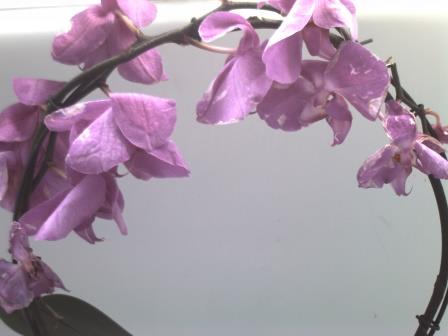Beware of thrips
18 May 2020
In practice, thrips are still causing many problems. They occur both in the greenhouse and outside. Since plants travel all around the world, new species of thrips are being introduced in greenhouses as well.
Thrips are minute, slender insects that can be found on sticky traps in the greenhouse. Thrips can cause significant damage to crops. Suction damage from thrips causes growth defects in flowers, growing tips, leaves and fruit of a wide variety of fruits, ornamental and vegetable crops (such as strawberries, chrysanthemums and cucumbers). Suction damage in the leaves creates silver-coloured spots, because plant cells are sucked empty.
In very severe infestations, necrotic spots can develop or there may even be withering of the leaves. Sometimes small dark droplets of water, the droppings of the larvae, are visible on the leaves. The quantities on sticky traps gives an indication of the size of the population.
Photo 1. Western flower thrips
The thrips go through several stages: egg, larval stage 1, larval stage 2, prepupa, pupa and adult. Reproduction can be either sexual or asexual, depending on the species. Population growth depends on the temperature, the host plant and the relative humidity, among other things. And in the case of Thrips tabaci, the presence of spider eggs can also have a positive influence.
Thrips can move actively; adults by flying and larvae by crawling, and be moved passively when people transport plants and materials. Thrips can enter the greenhouse from outside through the ventilation windows. They can survive as a pupa in the ground or on the plant, depending on the species. They may already be in the greenhouse without you noticing. In recent years, more and more tropical thrips have been found in Dutch greenhouses.
Signs of damage
Suction damage from thrips causes growth defects in flowers, growing tips, leaves and fruits of a wide variety of fruits, ornamental and vegetable crops (such as strawberries, chrysanthemums and cucumbers). Suction damage in the leaves creates silver-coloured spots, because plant cells are sucked empty. In very severe infestations, necrotic spots can develop or there may even be withering of the leaves. Sometimes small dark droplets of water, the droppings of the larvae, are visible on the leaves.
Several species of thrips can serve as vectors of tospoviruses, such as the well-known Impatiens Necrotic Spot Virus (INSV) and Tomato Spotted Wilt Virus (TSWV). Symptoms of these viruses often consist of round spots or circles in the leaves and/or fruits. In (sweet) pepper plants, even the head of the plant turns black and the growing tip dies.
Photo 2. The excrement of thrips on a leaf.
Photo 3. Sucking damage on the leaf of a succulent.
Photo 4. Western flower thrips in a strawberry flower.

Photo 5. Thrips sucking damage in Phalaenopsis.
Photo 6. Thrips palmi (melon thrips) on a cucumber.
Species
There are many species of thrips and many species also occur in the Netherlands. In Dutch greenhouses we find mainly western flower thrips (Frankliniella occidentalis). In addition, the tobacco thrips (Thrips tabaci) and Impatiens thrips (Echinothrips americanus) occur on a regular basis.
The tobacco thrips and western flower thrips can occur at the same time on one plant, for example on strawberries. The western flower thrips prefer to lay their eggs on the undersides of leaves or in flowers, in young soft tissue. If you are looking for larvae and adult specimens, look in the flowers. The tobacco thrips are found in places where the western flower thrips can also be found, but prefers the leaves.
The Echinothrips americanus prefers plants with sturdy leaves. It lives only on the leaves and is found in Ficus, Dieffenbachia, poinsettia, and other plants.
New thrips in the Netherlands
In recent years, an increasing variety of new thrips species have been occurring in Dutch greenhouses. “Since plants travel all around the world, new species of thrips are being introduced in Dutch greenhouses as well,” says Trudie Coenen, PlantDoctor at Eurofins Agro. She tells: “In warm greenhouses, a tropical species can survive easily and can also multiply. The new species of thrips may not necessarily be able to also survive outside the greenhouse, though."
The following species have been found in Dutch greenhouses in the PlantDoctors’ practice in recent years: Hercinothrips aethiopiae H. femoralis and H. dimidiatus in Aloe. Thrips parvispinus has now also been found in Dutch greenhouses, in Ficus benjamina. Fortunately, the species Thrips palmi has not yet been encountered in the Netherlands. This is a quarantine organism. There is almost nothing to be done about it because the insect has built up resistance due to the frequent use of chemical pest control.
Pest control
- Prevent thrips from flying into the greenhouse from outside.
- Check plants before they enter the greenhouse.
- Place sticky traps early and check them regularly.
- Use biological control agents in an early stage of infestation, such as predatory mites, predatory bugs, predatory thrips and parasitic wasps.
- Only use chemical agents if the population is too high and you have tried all other options.
More information
Please contact horti@eurofins.com
